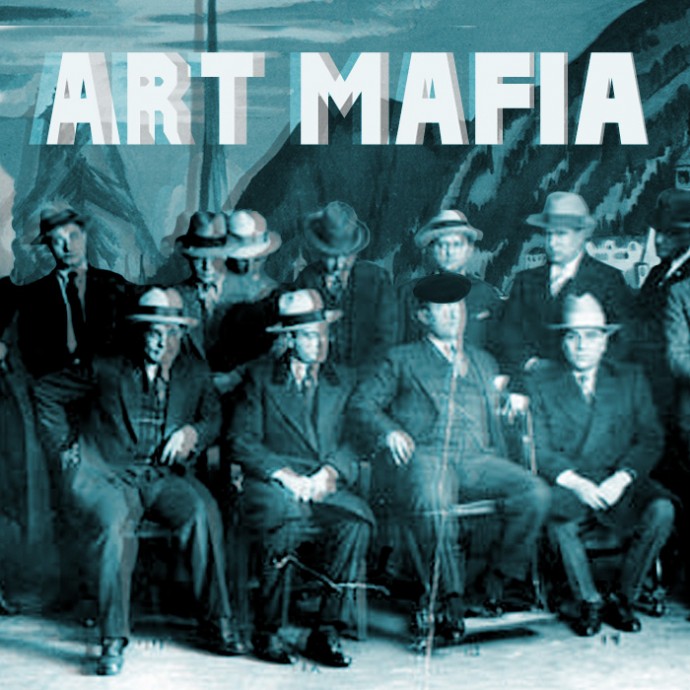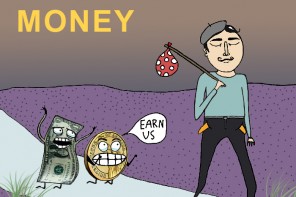I experienced the frustrating feeling of working in a circus commonly called the art world. It is very sad to devote your life to something as evil as the art trade. It is not that far from trafficking guns, drugs or human beings with a subtle but powerful difference. Here, there is no current value for money. If you pay for good shit, good weapons or good slaves you will get them. Here, it doesn’t matter how much money you’re spending, you’re probably buying shit. That which fills today’s walls, will fill tomorrow’s trash cans.
I’m a painter’s daughter so it is not difficult to understand the reason why I decided to get into the art world. Shortly after finishing my studies, I started working in the gallery without salary of course. They didn’t have change for 500€ so they weren’t able to give me their crumbs. While they were receiving hundreds of euros, I was answering hundreds of emails. While they were classifying art, I was doing the same with bills. People are worried about the working conditions of Amazon’s employees and how they are exploited. I do not give a shit about them; I think at least they don’t see how their passions are perverted everyday. Well, unless you consider it sacrilege that the Amazon forces them to bend boxes in a specific way on the assembly line.
Here, we’re always choosing sides too. When I started to work in one of the two most important galleries in Madrid, I realized that I was banned for life to work for any other one. Belonging to different families is not hard to feel like Romeo and Juliet sometimes. The little experience you can glean from one gallery cannot be added to your resume if you’re asking for a job in the other one. They are seeking inexperienced people who do not want to acquire any experience.
Many of you may think that my point of view could be totally subjective and relative, but after one year of working closely with ineptitude you started to question your own knowledge and capacity. I should have studied economics or sociology rather than art. Moreover we could start a new university called ” Economic, social and political principles of things that look nice and seem cool.”
Lesson 1: Sociology or the vicious circle of modern art today.
Remember the line “not because a lie will be repeated thousand times, it will become truth” because it doesn’t work in here. Here, crap always becomes a very expensive piece of art. The system works as follows. The artist makes a piece of shit. The gallery owner, with no academic knowledge, gives it the name “collector’s piece”, the buyers will call it “piece of art” and this is actually how a shitter becomes an artist.
Let’s take a closer look at our players:
The artist, who lives so lost in his own conscious, is able to develop a complicated and detailed plan on a 100-sheet PDF only to explain how to place his works on the walls of our gallery. It is ironic to think that there is so much more technique and effort put on this memorandum that in his work itself. I swear, it was a fucking masterpiece, even more valuable than the first class plane ticket that we bought him to hang his paintings on the wall.
The gallery owner decides based on his extensive experience and knowledge about business how to throw a party for something he doesn’t know how to judge and his assistants, who actually have real knowledge about art, are not allowed to judge. He is just going to find a way to put the perfect filter to transform this piece from an empty thing to the newest hype. From a useless guy to an artist. From cheated buyers to philanthropists.
Let’s talk about our third guest. If galleries trick you once, blame the galleries. If they do it twice you’re just a fucking moron. Actually it’s called “art collector” but nevermind. How curious it is to discover that people only knows about real estate speculation but not about artistic speculation. Here, you just need to bet hard on unknown artists and start to sell and buy their work in between your own foundations and sub-companies to gradually increase and maintain the price of their work.
This is useful as an introduction to Lesson 2: Merchandising of mediocrity.
Imagine that you’re going to “El Bulli”, they serve you McDonald’s hamburgers and they charge you the same or even more for it. Basically nothing really matters, the cook cannot distinguish a fork from a spoon and the consumer doesn’t appreciate the difference between meat and fish.
Assuming that galleries get 50% profit of the things they sell, it is hard to believe how an “artist” can survive solely by a few thousands of dollars. Analyzing the situation from administrative and bureaucratic rules causes more worries. Confidentiality agreements with buyers are really common. Do not think that this is because of anonymity. Here we’re talking about a sophisticated technique of tax evasion. We are not sending 100,000€ to Switzerland. We’re shipping an art piece to a small company that has surprisingly discovered a new artist hundreds of miles away from their own country. It is curious, no? It’s like going through Customs with 2 tons of coke, paying them not to undress or investigate you and calling it philanthropy.
Third lesson: Made in Shitland.
There is also a political side to it. We can take a look at the well known case of Fernando Botero. He has always had the support of his country, Colombia. I don’t want to criticize this particular artist’s work, but sometimes the label “Made in” is more important than anything else. Although there have always been unproven suspicions that Colombian guerrillas had been buying and selling Fernando Botero’s pieces, prices of this Colombian artist have risen, putting his work among the most expensive by a living contemporary artist worldwide. This helped to sell his sculptures in several countries of the world so now you could see this huge phenomena in the Paseo de la Castellana in Madrid or Paris’s Champs Elysees.
We could go deeper into this collective interest in South American art that everybody seems to have nowadays. Is hard to say but sometimes this expression is totally away from his roots. The only connecting element in between their work and others South American great artists, like Frida Kalho or Pedro Leon Zapata, is the spanish origin of the artist’s family name. And not even that, he probably changed it because Ramirez seems to be more “latino” than Thomson or Jones. By the way, is not so hard to find ourselves in this bizarre situation, being accused of discrimination if you do not appreciate or buy their collections. Racism is priceless.
Last seminar. Lesson 4: Conclusions
What have we learned about art? Because we’ve been talking about art, don’t you remember? What’s the point if we keep on doing the same things that Duchamp, Mondrian, Pollock or Brancusi did years ago? Is not about being influenced, it is about making disrespectful copies with complete ignorance of those vanguards that changed the way we see the world today. Like playing a Christmas song in front of your family and when they applaud, feel like you’re the greatest rock star ever born.
Today it is very punk to be anti Raphael, Picasso or Monet but it could be more punk to recognize that you don’t have the technical capacity for this perfection. Yeah, it is very underground to mask your ignorance under the premise that you don’t want to be contaminated by other movements but come on, knowing the capital of France or Germany is not snobbery, it is general knowledge. Technique and knowledge are necessary to produce passion, never forget that.
So finally, what do you need to be part of this circus? It’s quite simple, you just need three things: A degree in Sociology, a Master’s degree in Economics and a total and absolute ignorance about art. Do not discuss intricate concepts of postmodernism, cultural movements or personal development, talk about money. It’s a really simple concept which is actually a new expression of art, itself.







